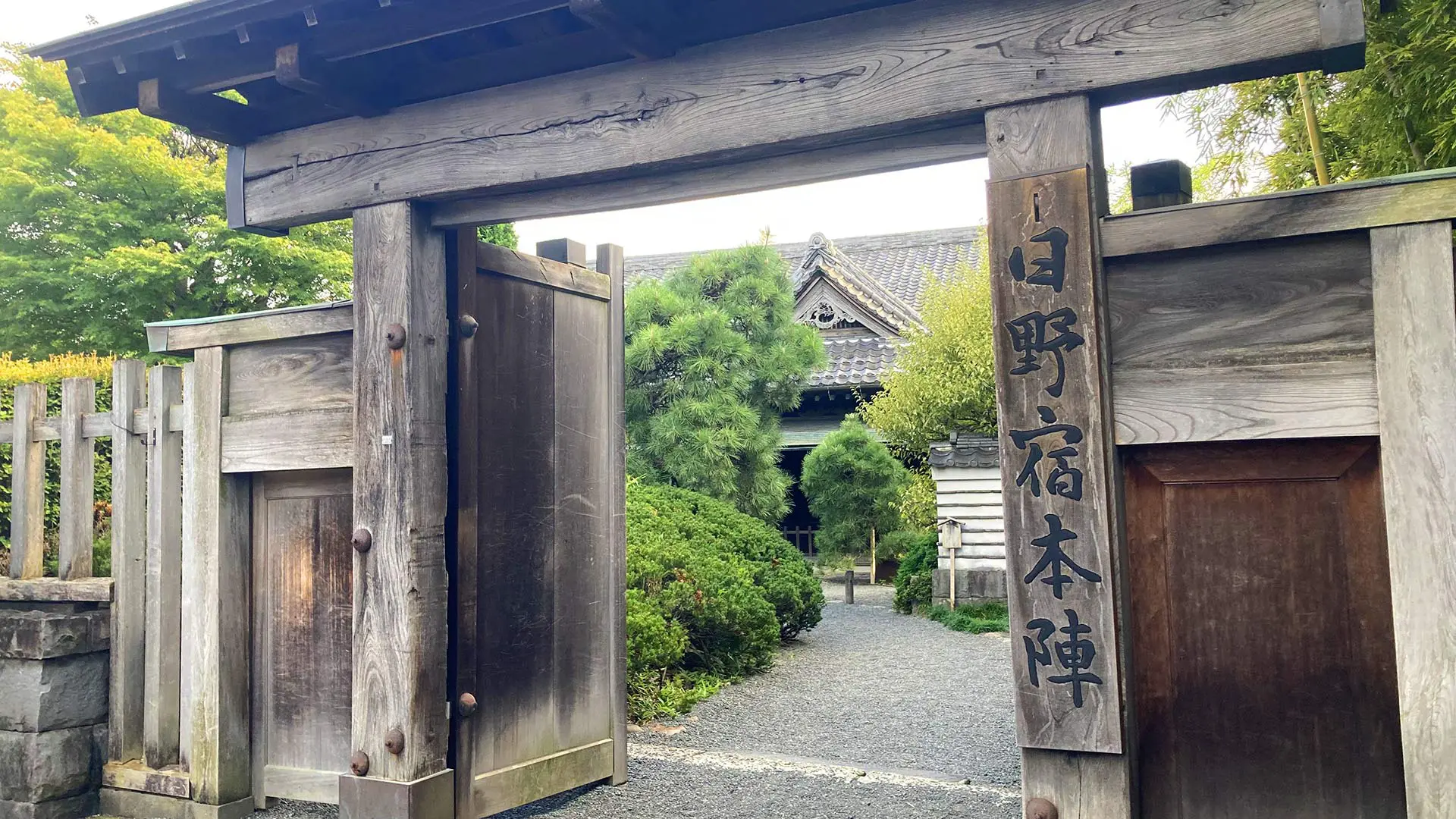
- Share this page
Share this page
- EN
Select Language
- FAVORITES
- Search
Detailed search: You can do a detailed search by keyword, genre, time, area and tag.
Main content starts here.
- Visit Tokyo |
- SPOT |
- Outlying Area |
- Chofu, Fuchu & Around - outdoor family fun |
- Take a trip to Hino, the birthplace of the Shinsengumi, and experience the final years of the Tokugawa shogunate
Updated: March 31, 2025
Take a trip to Hino, the birthplace of the Shinsengumi, and experience the final years of the Tokugawa shogunate
Your current location:
- Take a trip to Hino, the birthplace of the Shinsengumi, and experience the final years of the Tokugawa shogunate
In the final years of the Tokugawa shogunate, several young men, including Kondo Isami and Hijikata Toshizo, who had honed their skills at the Tennen Rishin-ryu dojo in Hino, applied to join the Roshigumi, a group of masterless samurai who were responsible for escorting the shogun to the capital city of Kyoto in 1863. They later formed the Mibu Roshigumi and then the Shinsengumi, and their activities in the capital of Kyoto set the course for the history of the final years of the Tokugawa shogunate and of Japan as a whole.
We will guide you on a course that takes you to various sites associated with Hijikata Toshizo, the Vice-Commander of the Shinsengumi, who remains a popular figure today.
Tips
- Take a trip to Hino, the birthplace of the Shinsengumi that helped turn a page in the history of the final days of the Tokugawa shogunate
- Tour the sacred sites associated with Hijikata Toshizo, the Vice-Commander of the Shinsengumi
- Experience the heightened spirit of the youth in the final days of the Tokugawa shogunate as you tour the area
Nyoiyama Hosenji Temple
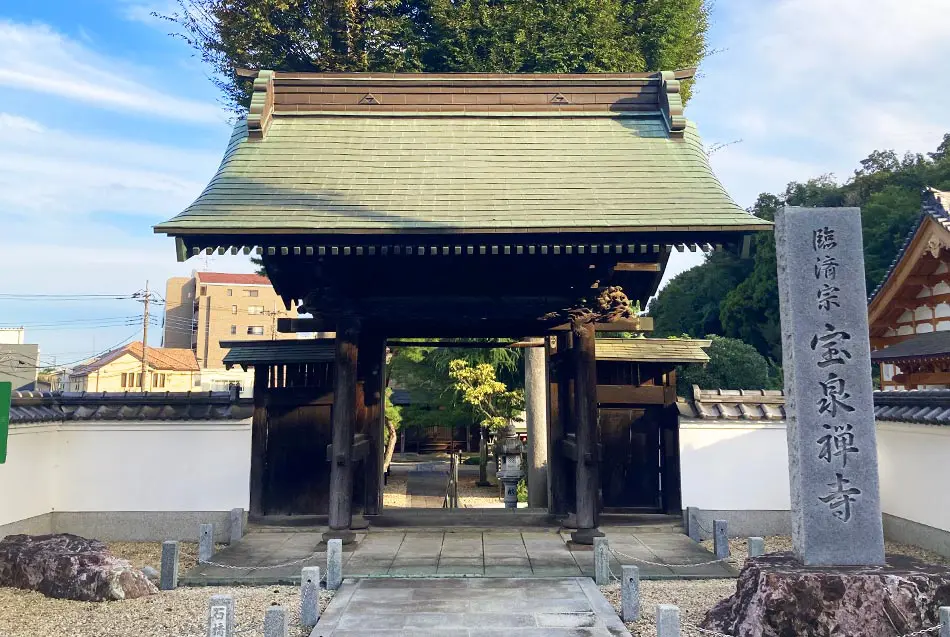
Inoue Genzaburo was a fellow disciple of Kondo Isami and Hijikata Toshizo, and they honed their skills together here in Hino. As an early member of the Shinsengumi and captain of the sixth unit, he played a major role in the so-called Ikedaya Incident and other turbulent events that occurred in the final days of the Tokugawa shogunate.
His position changed with the restoration of power to the Emperor, and he was killed in the Battle of Toba–Fushimi. Although he passed away at the age of 40, Hosenji Temple, where Genzaburo was laid to rest, has become one of the most popular places for fans of his to visit.
(6-minute walk)
Hino Yasaka Shrine
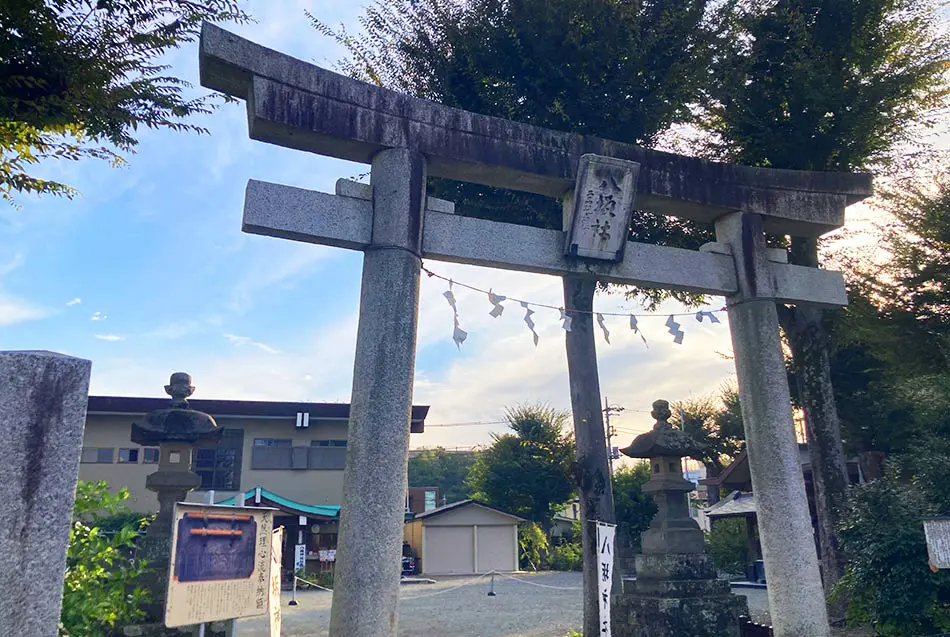
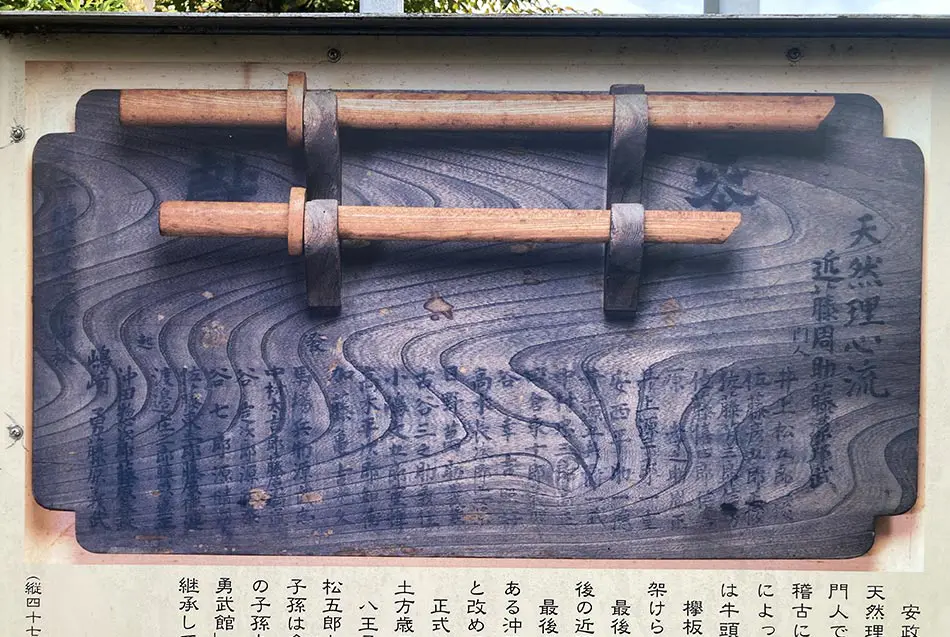
Votive tablet
Hino Yasaka Shrine, which was built in the late Edo period and incorporates elaborate carvings, is designated as a cultural property of Hino City.
The votive tablet, dedicated to Hino Yasaka Shrine in 1858 in hopes of improving one's swordsmanship, lists the names of 23 swordsmen from Hinojuku and students of the Tennen Rishin-ryu school of martial arts, including Kondo Isami and Okita Soji.
(5-minute walk)
Inoue Genzaburo Museum and Tennen Rishin-ryu Hino Dojo
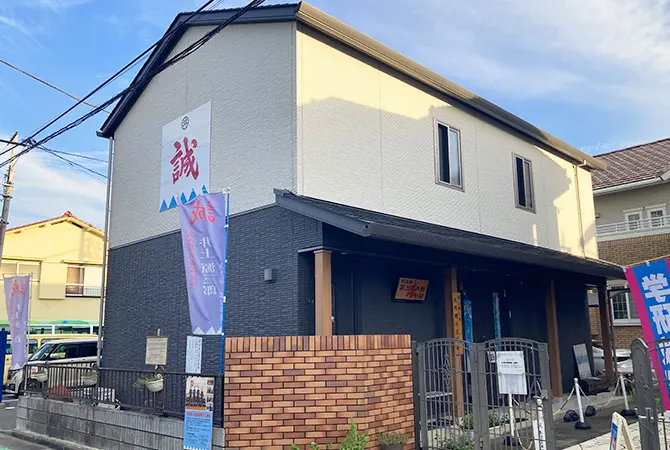
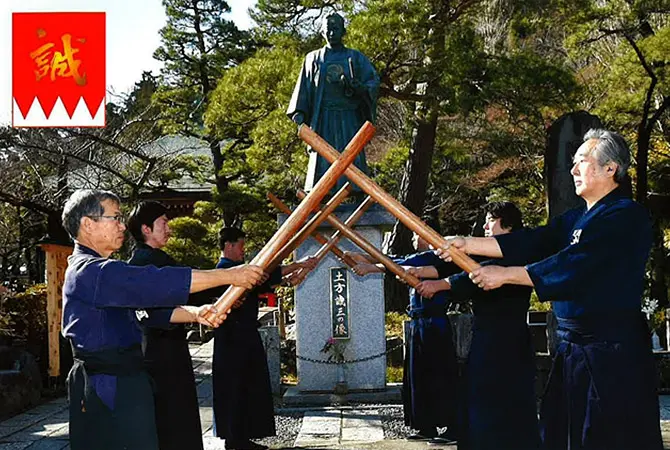
This museum was built on the site of the birthplace of Inoue Genzaburo, who was born into the family of "Hachioji Sennin Doshin" (Hachioji Thousand Warriors) and served as the leader of the sixth unit of the Shinsengumi.
The Hachioji Sennin Doshin was one of the Edo Shogunate's job classifications, and referred to the half samurai, half farmer who were stationed in Hachioji in Tama District, Musashi Province, under the direct control of the shogunate. Until the dissolution of the shogunate, their duties were not only to maintain law and order in the Hachioji area, but also to perform a wide range of other responsibilities, including protecting and cultivating Nikko duty stations, maintaining the Koshu and Nikko Kaido roads, and guarding and settling the Ezo region.
On the second floor of the museum, there is the Tennen Rishin-ryu Hino Dojo where many Shinsengumi warriors practiced swordsmanship, and where many swordsmen are still honing their skills today. If you are interested in the Shinsengumi or ancient Japanese martial arts, please contact the museum for a trial session.
(6-minute walk)
Hinojuku Honjin
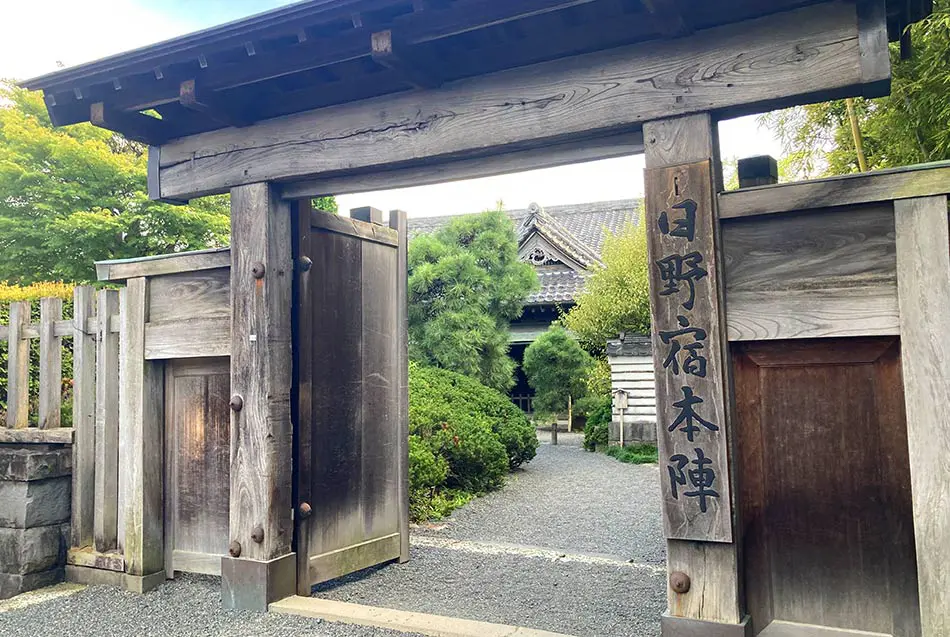
The Hinojuku Honjin, located in the post town of Hino, the fifth stop on the Koshu-kaido Road, accommodated feudal lords, direct retainers of the shogun, and officials of the shogunate during the Edo period. It is also the former residence of Sato Hikogoro, who served as a feudal lord of Hino and was the brother-in-law and cousin of Hijikata Toshizo and a supporter of the Shinsengumi, and is the only remaining roadside honjin building in Tokyo and is designated as a historic site by the Tokyo Metropolitan Government.
The Hinojuku Honjin, where young swordsmen such as Kondo Isami, Hijikata Toshizo, and Inoue Genzaburo honed their skills, can still be toured today. We invite you to come and feel the breath of these young swordsmen.
(14-minute walk)
Shinsengumi Furusato Historical Museum
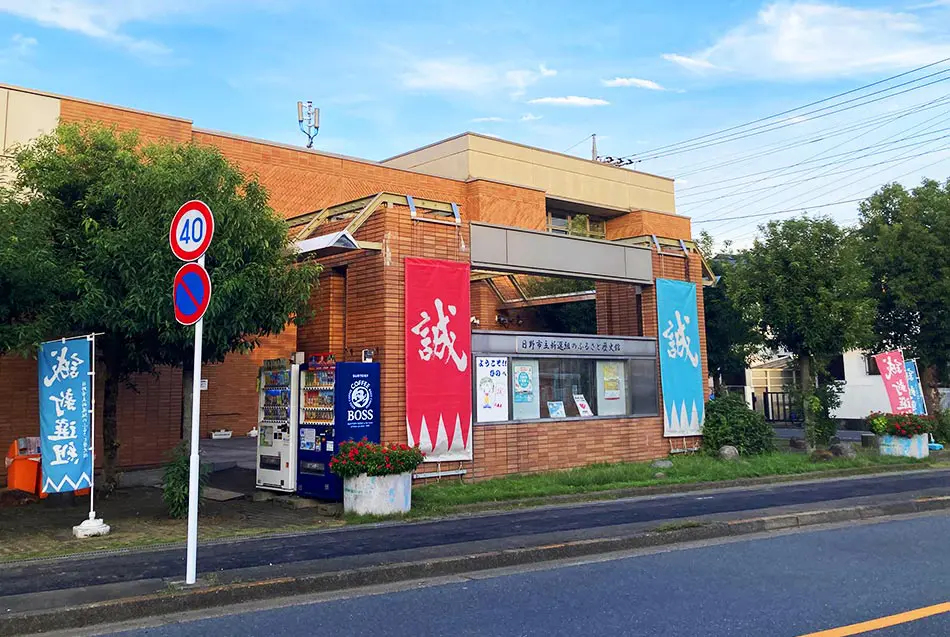
Shinsengumi Furusato Historical Museum
This museum focuses on the Shinsengumi and the end of the Tokugawa shogunate, and is a must-see for fans. There is a cosplay photo spot in front of the Shinsengumi post panel, as well as the latest exhibits and various events.
The “Hino Shinsengumi Festival,” held annually in May, the anniversary of Hijikata Toshizo's death, attracts fans from all over Japan to landmarks in Hino City, and is packed with a variety of exciting events. We recommend that you visit the sites associated with the Shinsengumi in Hino in time for this festival.